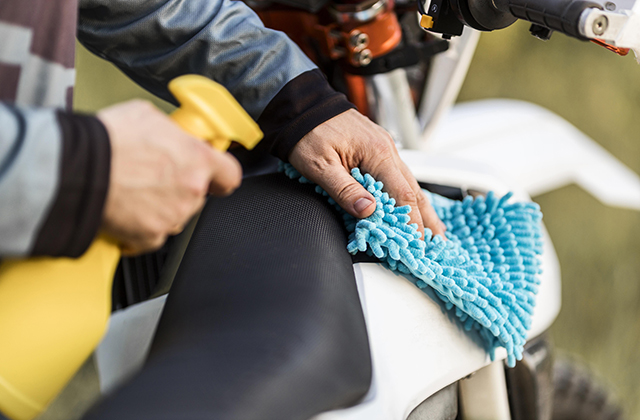1. Introduction
Car seat upholstery not only adds comfort but also plays a vital role in the overall aesthetics of your vehicle’s interior. Over time, it is inevitable for car seats to experience wear and tear, leading to faded colors, stains, rips, and other damages. However, with proper restoration techniques, you can revive your car’s upholstery and make it look as good as new. Here at waxit.com.au we have the best car upholstery cleaner.
2. Understanding Car Seat Upholstery
Car seat upholstery refers to the fabric or material covering the seats in your vehicle. It is designed to provide comfort, durability, and style. Common upholstery materials include leather, vinyl, fabric, and suede. Understanding the type of upholstery in your car is crucial as it determines the restoration methods and materials you should use.
3. Evaluating Upholstery Condition
Before embarking on the restoration journey, it’s essential to evaluate the condition of your car seat upholstery. Assess the extent of wear, tear, stains, and damages. Identify any loose threads, fading colors, or structural issues. This evaluation will help you determine the level of restoration required and plan your approach accordingly.
4. Preparing for Restoration
Proper preparation is key to successful upholstery restoration. Start by removing the car seats from the vehicle, if possible, to gain better access. Thoroughly vacuum the seats to remove loose dirt and debris. Use appropriate cleaning products to eliminate any stains or odors. Prepare the necessary tools, such as upholstery cleaning brushes, sewing kit, and replacement materials.
5. Cleaning and Stain Removal Techniques
Cleaning your car seat upholstery is a crucial step in the restoration process. Different types of upholstery require specific cleaning techniques. For fabric upholstery, consider using steam cleaning or shampooing methods. Leather and vinyl upholstery can be cleaned with specialized products and gentle wiping. Always follow the manufacturer’s instructions and test cleaning products on a small, inconspicuous area first.
6. Repairing Rips, Tears, and Burns
To restore upholstery with rips, tears, or burns, you can utilize various repair techniques. For minor damages, apply fabric glue or adhesive patches to seal small tears. Larger rips may require sewing using a matching thread and needle. In the case of burns, you may need to cut out the damaged section and replace it with a matching piece of fabric or upholstery.
7. Replacing Damaged Upholstery
In some cases, the damage to your car seat upholstery may be extensive, making it necessary to replace the entire upholstery. This process involves removing the old upholstery and installing a new one. It’s important to choose upholstery that matches the original design and materials of your car seats. You can either purchase pre-made upholstery or have it custom-made to ensure a perfect fit.
8. Choosing the Right Materials
When restoring car seat upholstery, selecting the right materials is crucial for achieving long-lasting results. Consider factors such as durability, comfort, and aesthetics when choosing upholstery fabrics or materials. Leather is known for its elegance and durability, while fabric upholstery offers a wide range of colors and patterns. Ensure that the materials you choose are suitable for your climate and driving habits.
9. DIY vs. Professional Restoration
Deciding whether to restore your car seat upholstery yourself or hire professionals depends on your skills, time availability, and budget. DIY restoration can be a rewarding project for those who enjoy hands-on work and have some experience. However, if you lack the necessary skills or time, seeking professional assistance ensures a high-quality and efficient restoration process.
10. Upholstery Restoration Cost
The cost of car seat upholstery restoration varies depending on factors such as the extent of damage, materials used, and whether you opt for DIY or professional services. DIY restoration generally incurs lower costs, as you only need to purchase materials and tools. Professional restoration costs may include labor, materials, and additional services. Obtain quotes from reputable upholstery specialists to determine the most cost-effective option.
11. Maintaining Restored Upholstery
After investing time and effort into restoring your car seat upholstery, it’s important to maintain it properly to prolong its lifespan. Regularly clean the upholstery using appropriate methods and products. Protect it from excessive sunlight and use seat covers or protectors when necessary. Avoid eating or drinking in the car to prevent stains and spills. By adopting these maintenance practices, you can enjoy your restored upholstery for years to come.
12. Enhancing Comfort and Style
Upholstery restoration provides an excellent opportunity to enhance the comfort and style of your car seats. Consider adding extra padding or cushioning for increased comfort during long drives. Explore different upholstery designs and patterns to add a personal touch and complement your vehicle’s interior. Customization options such as embroidered logos or monograms can further elevate the aesthetic appeal of your car seats.
13. Prolonging Upholstery Lifespan
To maximize the lifespan of your car seat upholstery, take proactive measures to protect it from everyday wear and tear. Use seat covers or protectors to shield the upholstery from spills, stains, and UV rays. Avoid placing sharp or heavy objects on the seats that can cause damage. Regularly vacuum and clean the upholstery to remove dirt and debris that can contribute to deterioration.
14. Eco-Friendly Upholstery Restoration
If you’re conscious about environmental sustainability, there are eco-friendly options available for car seat upholstery restoration. Look for upholstery materials made from recycled or renewable sources. Opt for water-based and non-toxic cleaning products to minimize environmental impact. Additionally, consider donating or recycling old upholstery materials instead of sending them to the landfill.
15. Conclusion
Restoring car seat upholstery is a transformative process that can revitalize your vehicle’s interior and enhance your driving experience. By following the secrets revealed in this article, you can achieve professional-quality results, whether you choose to embark on a DIY project or seek the assistance of upholstery restoration specialists. Embrace the opportunity to create a comfortable, stylish, and durable environment within your car.
